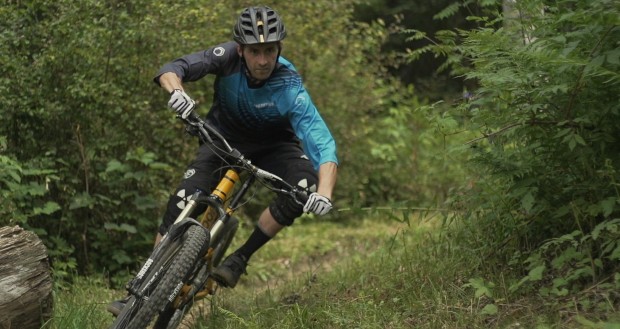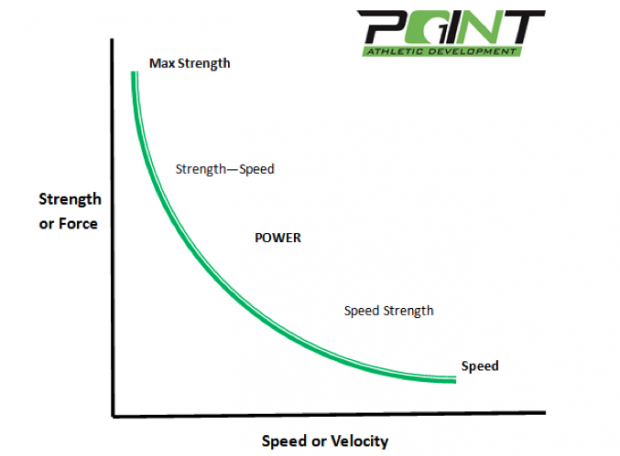Words: Chris Kilmurray / Point1 Athletic
Carrying on from or last chat in part two (read it here) about strength, what it is and how best to train it, we are going to talk here about its firstborn offspring, power!

I say offspring because really power in many ways is a skilful application of strength. Without adequate strength, power or powerful movement will not happen. That’s why we talked about strength first I suppose!
The word power itself actually doesn’t mean too much or more accurately can mean different things to different people, so the focus for us in this article is to lay out what I think power means to the mountain biker, why it’s important and how best to train it.
What is it?
First off, just to clarify what it is not, we are not talking about power in its SI unit version of Watts, I’m not going to discuss power metres (think SRM, Stages, Quarq etc…) or measuring wattage in any great detail. We are talking mainly about muscle power; the ability your muscles have to produce large amounts of force very quickly over relatively short periods of time (in one or multiple bouts/bursts).
If we go back to school for two seconds, Power = Force x Speed. Remember from our last instalment that strength was how much force your muscles could produce at a given time, well that’s why strength (force production) is so integral to being powerful.
In its purest form, being powerful allows you to achieve high speeds or move very quickly in a very short amount of time. Think about a single lap of 250m velodrome (10 seconds) the 100m sprint in athletics or even more “pure”, the hammer-throw in field athletics. Within those individual events, even though they are all “power” events, you have varying demands, while the hammer thrower (is that the term?!) needs to be powerful just once to get all that weight to fly in one go he needs to repeat that effort many times in a day, likewise the sprinter on the velodrome may need to replicate multiple 250m in a given day to qualify and reach the finals but will also need lots of speed in that “power” to keep spinning that gear over once they actually reach their top speed.
You can see how seemingly similar “power” events can actually have quite different demands and likewise power and power training for the mountain biker have to meet some pretty specific and sometimes crazy demands depending on the exact event/s, race or rider.
To try and explain that a little better we can look at what some coaches call the Strength – Speed Continuum. I’m not sure who came up with this idea, maybe it’s just always been there as it is pretty logical way of thinking about what “power” demands your sport has, from pure strength to pure speed, and therefore you can decide how often and when to train the different components of power along the continuum:

Clearly the more force or tension you must create the slower you are going to move and inversely the less force you need to produce the faster your movements can be.
Having established that once you’ve covered strength or max strength and have an appreciable amount of strength built up (think a double bodyweight deadlift, 10 perfect pull-ups, 1 x bodyweight bench-press etc.) you can start thinking about building some power and once you can coordinate those muscles to move your body or your body and bike quickly, then you can think about training to do that quick movement repeatedly (but how far along the continuum of “quick” that movement actually is depends greatly on the event, track, trail etc.)
Instead of losing you now in a muddle of terms and jargon, let’s try to pull it all together and make sense of power and the strength-speed continuum for the mountain biker.
Losing the either/or attitude when thinking about your training is crucial for success, same applies here. It’s not a case of either strength or speed for the mountain biker. As a non-classical sport, like many modern sports, you need to train and acquire qualities across the full range of the strength – speed continuum.
Why is it important?
Max strength is the foundation, but a downhiller exploding out of a turn with hips, torso and shoulders holding good form, traveling 30km/h at the bottom of a steep chute while gravity compresses him/her and turning forces try to rip the bike away requires pure POWER, right in the middle of the continuum. But just after “popping” out of that turn there is 45m of straight track and the rider needs to pedal ASAP to gain milliseconds, well that quick change of cadence needs pure speed right on the extreme of the continuum, then having got that gear up to speed the rider changes down two, three, four gears and now needs speed-strength to keep increasing velocity.
We could list examples all day long, the strength-speed requirements of the enduro rider on the gnarliest rocks in Finale or Val d’Allos, holding a line while making slight adjustments in body position, but knowing a real broad range of athletic abilities is needed as a mountain biker is the bottom line. Finding out exactly where you and the demands of your event lie on the strength-speed continuum is the job of the clever rider or a good coach, and pinpointing what you need to train to improve your power, when and how often is the real job of a good coach.




